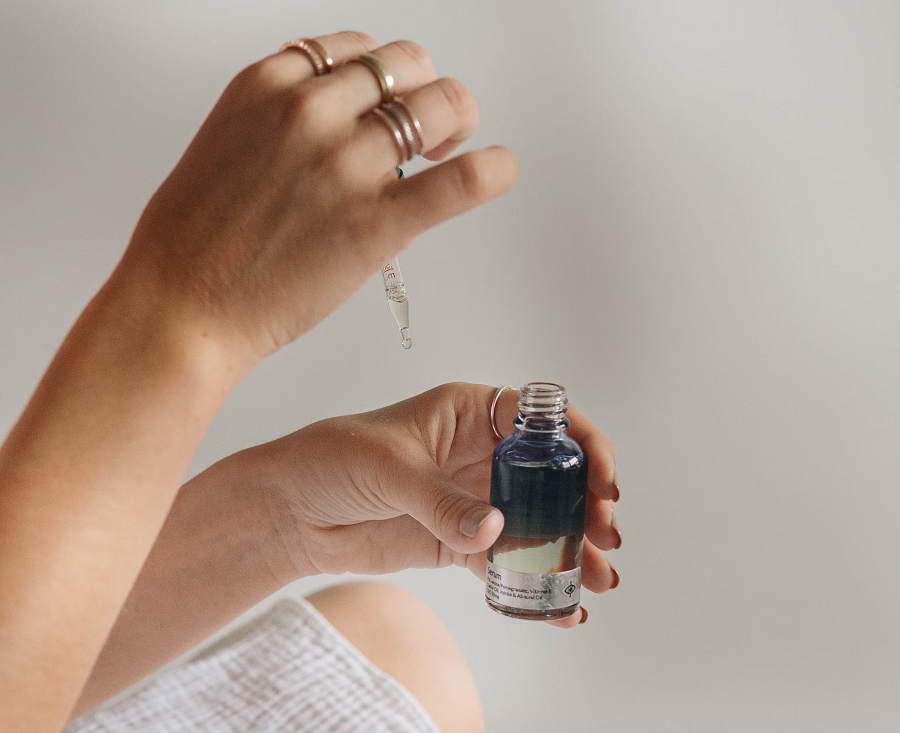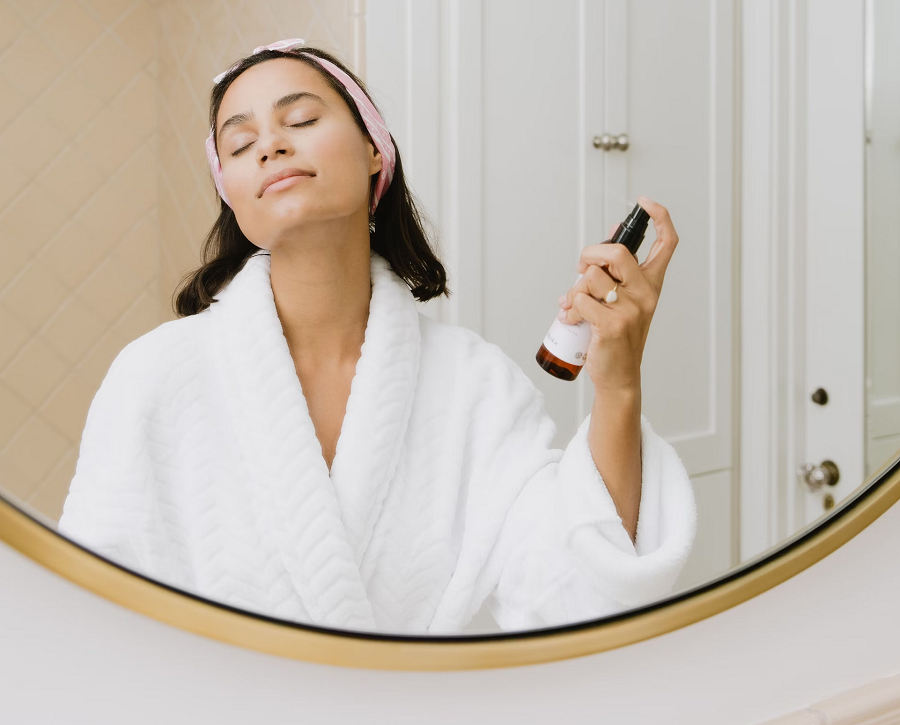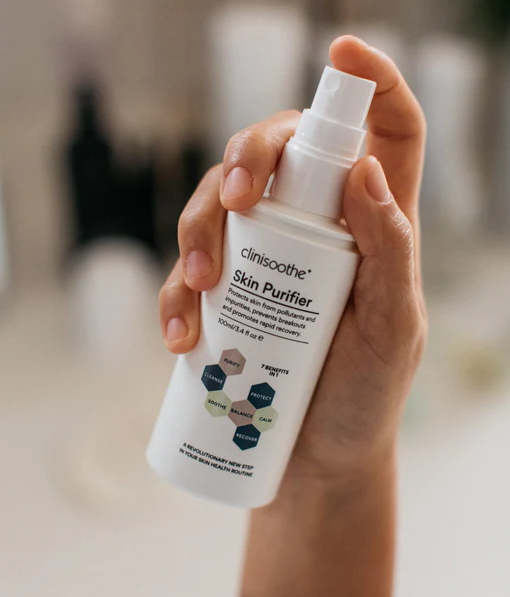
Pregnancy is an amazing journey, but it often brings unexpected skin changes, from the coveted “glow” to breakouts and pigmentation shifts like melasma. Navigating skincare during this time can feel overwhelming, with questions about safety and effectiveness at the forefront. In this guide, I’ll share key insights into how pregnancy hormones affect your skin, highlight ingredients to be mindful of for your and your baby’s well-being, and spotlight gentle yet powerful alternatives. Drawing on expert advice and my personal experiences, including the products that became essential in my routine, I aim to provide you with practical tips for building a safe and nurturing skincare regimen, helping you feel confident and comfortable throughout your pregnancy.
Skip to my skincare recommendations
How does pregnancy affect the skin?
Pregnancy brings about significant changes throughout the body, and the skin is often visibly affected. As hormones surge to support the developing baby, they can trigger a variety of skin experiences. You might notice increased oiliness leading to breakouts, or conversely, experience heightened dryness and tightness. These shifts are primarily driven by the dynamic interplay of pregnancy hormones like estrogen and progesterone.
Beyond these general changes, many pregnant individuals encounter specific skin alterations. Melasma, or the “mask of pregnancy,” is common, presenting as patches of darker pigmentation on the face due to hormonal shifts and increased sun sensitivity. Skin can also become more reactive, leading to irritation from previously tolerated products. While not limited to the face, stretch marks are a significant concern for many, appearing on areas like the abdomen and breasts as the skin stretches, with hormonal changes also contributing to their development.

Ingredients to Be Cautious Of During Pregnancy:
- Retinoids (Retinol, Retinaldehyde, Tretinoin, Adapalene): Due to the known risks associated with oral retinoids and the precautionary principle for topical use. Consider bakuchiol as a safer alternative.
- Salicylic Acid (High Concentrations): While low concentrations (around 2%) are often considered acceptable, it’s wise to be cautious with higher concentrations (like in peels or targeted treatments) due to concerns with oral forms.
- Benzoyl Peroxide (High Concentrations): Similar to salicylic acid, lower concentrations are generally considered safer, but be mindful of usage.
- Hydroquinone: Generally advised against due to its potent effect on melanin production.
- Certain Essential Oils: Some essential oils may pose risks during pregnancy. Research thoroughly or consult a professional before use.
- Phthalates and Parabens: While the scientific consensus on their direct harm in skincare is still evolving, many pregnant individuals choose to avoid them as a precaution.
Important Note: This list is for informational purposes and based on general recommendations. Always consult with your dermatologist or obstetrician for personalised advice regarding your skincare during pregnancy. They can provide guidance based on your specific health situation.

Safe and Effective Skincare Ingredients
These ingredients are generally considered safe and offer various benefits without the concerns associated with the ones we just discussed.
- Hyaluronic Acid: This powerhouse hydrator is a must-have during pregnancy when skin can often feel dry or dehydrated. Hyaluronic acid is a humectant, meaning it attracts and retains moisture in the skin, leading to a plump, supple complexion. It’s gentle and suitable for all skin types.
- Vitamin C (Ascorbic Acid and its derivatives like Sodium Ascorbyl Phosphate, Magnesium Ascorbyl Phosphate): A potent antioxidant, Vitamin C helps to protect your skin from environmental stressors like pollution and UV radiation. It can also aid in brightening the skin, evening out tone, and boosting collagen production, which can be beneficial during and after pregnancy.
- Niacinamide (Vitamin B3): This multi-tasking ingredient is fantastic for supporting the skin barrier, reducing redness and inflammation (which can be helpful if your skin becomes more sensitive during pregnancy), minimising the appearance of pores, and improving overall skin tone and texture.
- Azelaic Acid: Often recommended by dermatologists during pregnancy, azelaic acid is a gentle yet effective ingredient that can help with acne, rosacea, and hyperpigmentation. It has anti-inflammatory and antibacterial properties and can help to fade dark spots.
- Bakuchiol: As mentioned earlier, this plant-derived ingredient is a fantastic natural alternative to retinol. It offers similar benefits in terms of reducing fine lines and wrinkles and improving skin elasticity, but without the same concerns regarding pregnancy safety.
- Physical Sunscreens (Zinc Oxide and Titanium Dioxide): Protecting your skin from the sun is crucial during pregnancy, especially to help prevent and manage melasma. Physical sunscreens create a barrier on the skin’s surface to block UV rays and are generally considered the safest option during pregnancy as they are not readily absorbed into the bloodstream.
- Gentle Cleansers: Opting for mild, non-stripping cleansers is essential to maintain your skin’s natural moisture barrier, especially if you’re experiencing increased sensitivity or dryness. Look for formulas that are fragrance-free and sulfate-free.
- Ceramides and Other Barrier-Repairing Ingredients: Ingredients like ceramides, fatty acids, and cholesterol help to replenish and strengthen the skin’s protective barrier. This can be particularly beneficial for combating dryness and sensitivity that can arise during pregnancy.
Incorporating these safe and effective ingredients into your routine can help you address various skin concerns and maintain a healthy, radiant complexion throughout your pregnancy journey. Remember to always listen to your skin and adjust your routine as needed.

Building a Safe and Effective Pregnancy Skincare Routine
During pregnancy, a consistent yet gentle skincare routine for both your face and body can help address common changes and keep your skin feeling its best. Here’s a combined approach:
Morning Routine: Setting Your Skin Up for Success
Gentle Cleanse (Face & Body): Begin by cleansing your face and body with a mild, fragrance-free cleanser. Avoid harsh soaps that can strip your skin’s natural oils. Antioxidant Serum (Face): Apply a Vitamin C serum to your face to protect against environmental stressors and promote a brighter complexion. Hydrating Moisturiser (Face & Body): Use a lightweight, hydrating moisturiser on your face and body. Look for ingredients like hyaluronic acid and ceramides to lock in moisture and support skin elasticity. For areas prone to stretch marks (abdomen, breasts, hips, thighs), you might opt for a slightly richer formula containing ingredients like cocoa butter, shea butter, or natural oils. Broad-Spectrum Physical Sunscreen (Face & Exposed Body): This is crucial! Apply a generous layer of physical sunscreen (zinc oxide or titanium dioxide) to your face and any other exposed areas of your body to protect against UV rays and help prevent melasma. Breathable Clothing: Choose comfortable, non-restrictive clothing made from natural fibres like cotton.
Evening Routine: Nourishing and Repairing While You Rest
Gentle Cleanse (Face & Body): Cleanse your face and body again with a mild, fragrance-free cleanser to remove any makeup, sunscreen, and impurities accumulated throughout the day. Targeted Treatment (Face – Optional): If you’re using a pregnancy-safe targeted treatment like a low-concentration azelaic acid for breakouts or redness, or a bakuchiol serum as a retinol alternative, apply it to your face after cleansing. Hydrating Serum (Face – Optional): Consider applying a hydrating serum containing niacinamide or hyaluronic acid to your face for extra moisture and barrier support. Nourishing Moisturiser (Face & Body): Use a richer moisturiser on your face and body before bed. For the body, focus on areas prone to stretch marks with a moisturising balm or oil, gently massaging it in. For nipple care in later pregnancy, a small amount of pure coconut oil or lanolin can be considered for moisturising dry nipples. Listen to Your Skin: Pay attention to how your skin feels and adjust product usage as needed. If you experience any irritation, discontinue use of the product.
Listen to Your Skin and Patch Test:
- Patch Test: Always introduce new products one at a time and perform a patch test on a small area of skin before applying them liberally to your face and body.
- Nipple Care: Avoid harsh soaps and opt for breathable fabrics. Consider natural oils for moisturising in later pregnancy. Consult your healthcare provider for any concerns.
- Hydration: Drink plenty of water throughout the day to support overall skin health and hydration.
- Consult Your Doctor: For any specific skin concerns or conditions during pregnancy, always consult with your dermatologist or obstetrician for personalised advice.
This combined routine aims to be efficient and addresses the key skincare needs of both your face and body during pregnancy, keeping in mind safety and effectiveness.
Read on for my recommended pregnancy skincare products…

SKIN|CYCLES 5D Hyaluronic Serum:
During my pregnancy, hydration became a real focus, and the SKIN|CYCLES 5D Hyaluronic Serum quickly became a go-to in my routine. What I particularly appreciated was its lightweight texture, which absorbed beautifully without feeling sticky or heavy – a welcome change when my skin felt more sensitive. Knowing that hyaluronic acid is a safe and effective hydrator during pregnancy gave me peace of mind, and I definitely noticed a difference in how plump and supple my skin felt, especially on days when dryness seemed to be more of an issue. It layered well under my moisturiser and sunscreen, making it an easy addition to both my morning and evening routines.
- £165 – skincycles.com
- £132 subscription – skincycles.com
- £165 – harrods.com
Soft and Co Moisturising Body Oil
As my bump grew, keeping my skin on my body well-moisturised became a priority, and the Soft and Co Moisturising Body Oil was a lovely addition to my post-shower ritual. I found the texture to be rich yet easily absorbed, leaving my skin feeling soft and nourished without any greasy residue. The gentle scent was also a plus during a time when my sense of smell was heightened. Incorporating this oil into my routine felt like a small act of self-care, and it definitely helped to combat the feeling of tightness that sometimes came with my skin stretching.
- £8.80 – softandco.co.uk
- £13 – amazon.co.uk


Palmer’s Skin Therapy Oil Rosehip
The Palmer’s Skin Therapy Oil with Rosehip was another product I incorporated, particularly for targeted areas and for its potential to improve skin tone and texture. Rosehip oil is known for its skin-regenerating properties, and I liked using this on areas where I felt my skin needed a little extra TLC. The oil absorbed nicely and left my skin feeling smooth. I appreciated that it was a multi-purpose product, and I felt comfortable using it knowing it’s often recommended for helping to improve the appearance of scars and stretch marks, making it a useful addition to my pregnancy skincare arsenal.
- £7.19 – amazon.co.uk
- £10.49 – superdrug.com
- £8.44 – boots.com
Soft and Co Anti-Blemishes Anti-Stretch Marks Dry Oil
Navigating hormonal breakouts during pregnancy while also trying to care for my growing belly was a bit of a balancing act. The Soft and Co Anti-Blemishes Anti-Stretch Marks Dry Oil intrigued me as it aimed to address both concerns. I found the “dry oil” aspect appealing as it absorbed quickly, which was great when I didn’t want to wait around before getting dressed. While my experience with its anti-blemish properties was positive, I appreciated that it contained ingredients often associated with soothing the skin, and it felt gentle enough for my pregnancy-heightened sensitivity.
- £16.20 – softandco.co.uk
- £18.50 – amazon.co.uk


Palmer’s Tummy Butter for Stretch Marks
Palmer’s Tummy Butter is such a classic product associated with pregnancy, and it became a staple in my body care routine. The rich, emollient texture felt incredibly nourishing on my growing belly. I made it a point to massage it in regularly, especially after showering, focusing on areas where my skin was stretching the most. While I know that genetics play a significant role in stretch marks, the act of applying this butter felt proactive and helped to keep my skin feeling hydrated and supple throughout my pregnancy journey. The familiar scent also became quite comforting.
- £3.99 – superdrug.com
- £8.47 – amazon.co.uk
Clinisoothe+ Skin Purifier
During periods when my pregnancy skin felt particularly reactive or when I experienced hormonal breakouts, the Clinisoothe+ Skin Purifier became a reassuring step in my routine. I was drawn to its gentle yet effective formula, which felt incredibly mild on my often-sensitive skin. Knowing it was designed to be non-irritating was a significant plus during this time. I primarily used it as a toner after cleansing, and I appreciated how it seemed to calm any redness or inflammation without leaving my skin feeling dry or tight. It felt like a gentle way to purify and balance my complexion, especially when other active ingredients felt too harsh. It became a trusted product for those moments when my skin needed a little extra soothing and care.
- £14.99 – clinisoothe.com
- £14.95 – amazon.co.uk


From scaling mountain peaks to savouring exotic flavours, I’m a passionate explorer with an insatiable appetite for adventure and good food. As an Outdoor Adventure and Travel Editor, I’m constantly seeking new experiences that ignite my senses and broaden my horizons. Through my blog, I share captivating travel tales, mountain-tested advice, healthy food inspiration, and training tips to empower fellow adventurers on their own journeys of discovery.
Follow Sam’s adventures on Instagram @sams_adventures_x